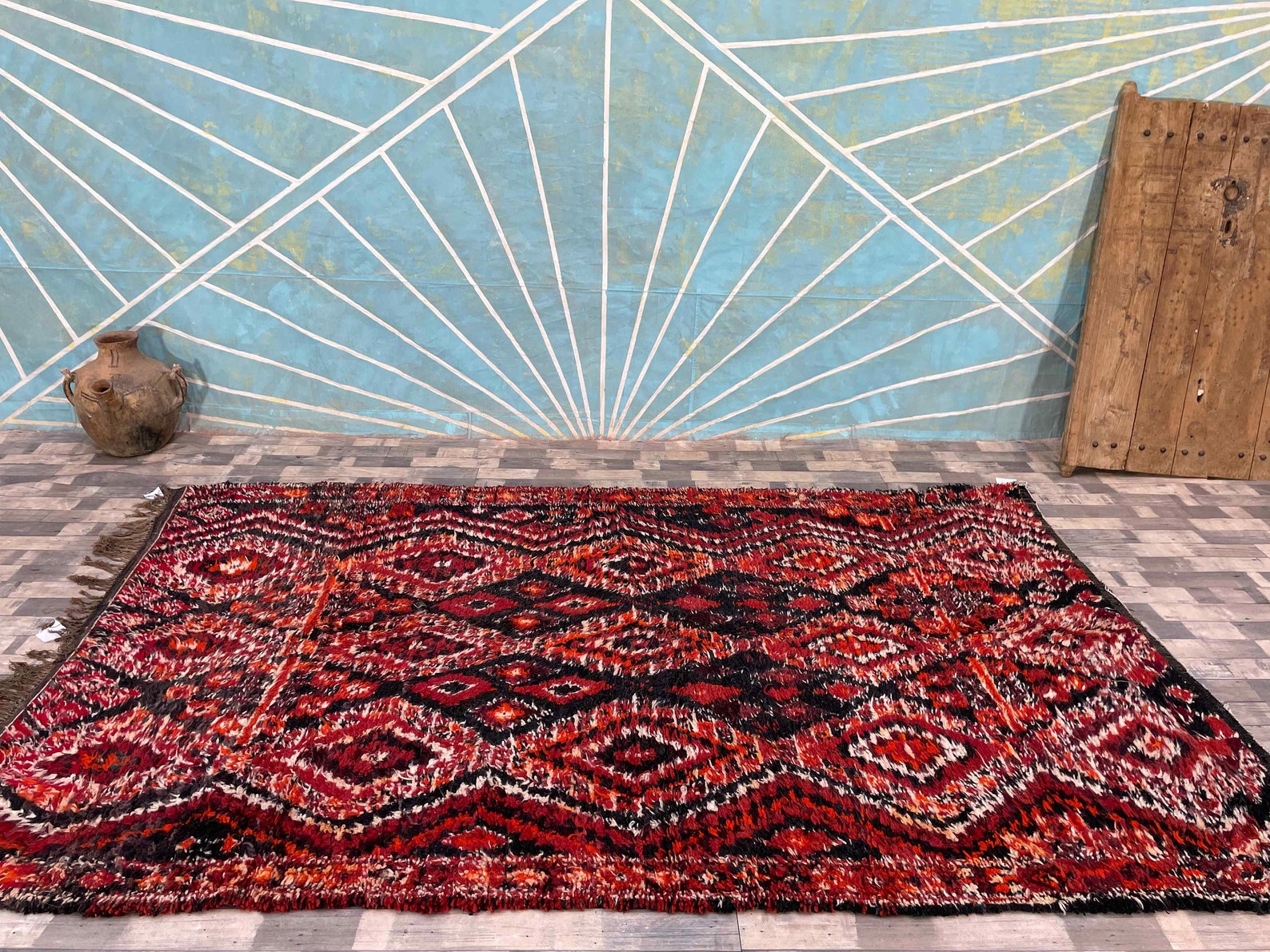Eco-Friendly: Sustainable Choices in Materials for Moroccan Rugs
Decorating your home is a moment to express your personal style and selecting options that align with your beliefs. In the last few years, there has been a rising awareness of the value of eco-friendliness in home furnishings. One beautiful way to blend visual appeal with eco-consciousness is through the use of Moroccan rugs. wool rugs for their vibrant colors and intricate designs, these rugs not only act as show-stopping highlights in your interior but also come from materials that can be sourced with the ecosystem in mind.

When you select Moroccan rugs, you are embracing a tradition that emphasizes artistry and eco-friendly resources. Many of these rugs are handcrafted by skilled artisans using wool sourced from local sheep or cotton cultivated in sustainable conditions. This not only benefits local communities but also lowers the carbon footprint connected to mass production. Let’s discover how you can improve your interior design by ethical selections that celebrate both tradition and environmentalism.
Heritage Materials and Approaches
North African rugs are well-known for their rich textures and bright colors, primarily due to the organic materials used in their creation. In the past, these rugs are made from wool sourced from regional sheep, which not only provides comfort but also durability. The wool is often left in its natural state, allowing artisans to utilize its tenderness and strength without relying on synthetic additives. This commitment to using local wool ensures that the rugs are not only environmentally friendly but also deeply connected to Moroccan heritage.
In addition to wool, artisans may incorporate eco-friendly dyes derived from plants, minerals, and insects. These dyes create the gorgeous hues that characterize Moroccan rugs, ranging from natural reds and blues to warm ochres and greens. By utilizing these natural materials, weavers maintain an eco-friendly approach while celebrating the diverse flora and fauna of the region. This technique of dyeing reflects a traditional practice that showcases the artisans' profound understanding of their environment.
The weaving techniques used in creating Moroccan rugs are as different as the materials themselves. Manual knotting is a common method, where skilled artisans intricately tie knots to form intricate patterns and designs. Each rug tells a story, representing the cultural essence and traditions of the community it comes from. This craftsmanship not only highlights the unique artistry of each piece but also emphasizes the importance of preserving these traditional techniques in the face of modern manufacturing.
Eco-Friendly Alternatives
When considering Moroccan rugs in your home, choosing eco-friendly materials is essential to making a responsible choice. Many artisans use organic fibers like wool, cotton, and jute, which are not only biodegradable but also renewable. Wool, for instance, comes from sheep that can be sheared annually, allowing for continuous production without harming the animals. By opting for rugs made from these materials, you are promoting a circular economy and reducing your environmental footprint.
In furthermore to natural fibers, certain Moroccan rugs are made from recycled materials. Techniques are developing, and artisans are now incorporating discarded fabrics and upcycled textiles into their creations. This method not only minimizes waste but also gives each rug a unique character, as the mix of colors and textures results in one-of-a-kind designs. By choosing recycled rugs, you contribute to a more sustainable approach to fashion and home decor.
Lastly, consider the production processes involved in creating Moroccan rugs. Look for rugs that are handmade by local artisans, as these practices often utilize traditional methods that are more eco-friendly to the environment compared to industrial manufacturing. Supporting local craftspeople encourages fair labor practices and preserves cultural heritage, making your choice of rug not only a stylish addition to your home, but a responsible one.
This is the Influence of Eco-friendly Decisions
Opting for sustainable resources for North African rugs greatly lessens ecological harm. Traditional textile crafting methods often involve natural fibers such as animal hair, cotton, and natural fiber, which are biodegradable and require fewer energy to manufacture in contrast to synthetic alternatives. By selecting for rugs made from these materials, consumers can contribute to a reduction in contamination and waste associated with mass-produced textiles, supporting a greener planet.
Furthermore, backing craftspeople who create Moroccan rugs using sustainable techniques helps maintain heritage traditions and artisan economies. Many artisans use age-old techniques handed down through generations, ensuring that the craft remains active and financially viable. This devotion to quality not only maintains local communities but also encourages a more profound bond between shoppers and the stories behind each individual rug.
Ultimately, sustainable decisions improve the complete look and quality of living decor. Moroccan textiles, made from sustainable materials, often showcase rich textures and vibrant, earth-toned colors that bring coziness and style to homes. By investing in these ethical products, decorators not only improve their decor design but also promote a more eco-friendly lifestyle that values craftsmanship and ecological responsibility.